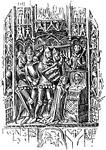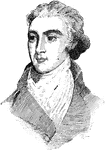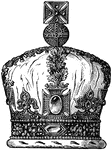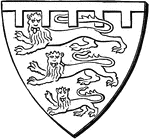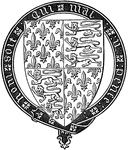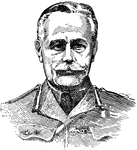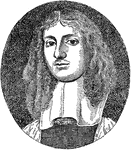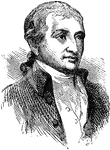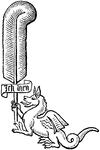
Monogram of John Baret
"In the church of St. Mary, at Bury St. Edmunds, the ceiling of the eastern compartment of the south…
Lord Beaconsfield
Also known as Benjamin Disraeli. He was the Prime Minister of the United Kingdom from 1874 to 1880.
!["After a successful summer campaign, [Caesar] made his way to the coast and cross over into Britain. He then withdrew into his winter-quarters in Gaul, but in the following year returned into the island, defeated the British Celts under their king Cassivellaunus, and reduced the country to a dependency, compelling the Britons to pay tribute and give hostages."](https://etc.usf.edu/clipart/78900/78943/78943_landing_01_mth.gif)
Landing of the Romans in Britain
"After a successful summer campaign, [Caesar] made his way to the coast and cross over into Britain.…
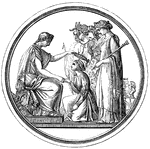
Britannia Crowning a Woman
Britannia, the personification of Britain, is crowning a kneeling woman while four other women stand…

Carnarvon Castle
"This fortress was founded by Edward I in 1283. It is one of the most impressive of the decayed medieval…
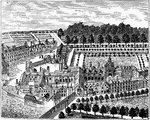
Charterhouse School, 18th Century
Charterhouse, originally Sutton's Hospital in Charterhouse, is a prominent boys independent or public…

William Pitt, Earl of Chatham
The 1st Earl of Chatham who led Britain during the Seven Years' War. He was the Prime Minister between…

Congleton
"A market-town and municipal borough of England, in the county of Cheshire, near the border of Staffordshire,…
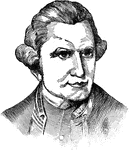
Captain James Cook
A British explorer who made detailed maps of Newfoundland before he achieved the first European contact…

Coronation Chair in Westminster Abbey
"Beneath the seat is the celebrated Scottish Stone of Scone, which was carried away from Scotland by…

The Cliffs of Dover
A range of cliffs that form part of the British coastline facing the Strait of Dover and France. Historically,…

Hemlock Water Dropwort
"Water Dropwort is a genus of plants of the natural order Umbelliferæ. A number of species are…
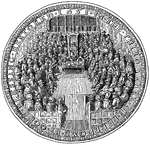
Great Seal of England Under the Commonwealth
The seal used to symbolize the monarch's approval of important state documents.

George I, King of England
The King of Great Britain and Ireland from August 1, 1714 until he died on June 11, 1727.
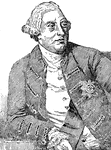
George III
The King of Great Britain and King of Ireland until their union in 1801. He continued his reign over…
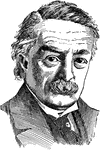
David Lloyd George
The Prime Minister of the United Kingdom from 1916 to 1922 and Leader of the Liberal Party from 1926…

The Island of St. Helena
An island located in the southern Atlantic Ocean. It is currently part of the British overseas territory.…
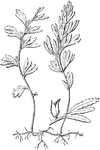
Habit and Detached Pinna with Involucre of Hymenophyllum Unilaterale
The common name of hymenophyllum is filmy fern. The unilaterale variety has dark green, rigid fronds.…
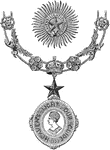
Insignia of the Order of the Star of India
"This Order was instituted by Her Majesty the Queen, in the year 1861, for bestowing honor upon the…

Gold Coin of James I
A gold coin of King James I. It was the first coin to bear the name 'Great Britain.'
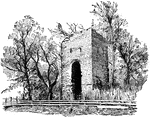
Ruins at the Brick Church at Jamestown
"Jamestown is now an island, for the sandy beach which once connected it with the mainland has disappeared.…
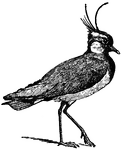
Lapwing (or Peewit)
A handsome plover-like bird of Northern Europe and Asia (Vanellus cristatus), also known in Great Britain…
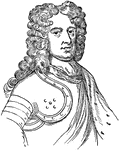
Duke of Marlborough
An English statesman who served in several battles during the late eighteenth century.

The Nelson Monument
"A granite Corinthian column, 145 feet high, surmounted by a statue of Nelson, 16 feet high. On the…

Branch of Narrowleaf Cottonwood
Also known as Populus angustifolia. The branch of a Narrowleaf Cottonwood tree, native to Great Britain.

Florence Nightingale
"Miss Florence Nightingale did remarkable work during the Crimean War for the relief of sick and wounded…
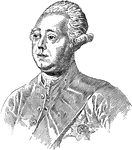
Lord North
Frederick North was the Prime Minister of Great Britain from 1770 to 1782. He led Great Britain through…
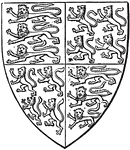
Shield of Queen Philippa
The heraldic shield of Philippa of Hainault, the Queen consort of Edward III of England.

William Pitt the Younger
The youngest prime minister of Great Britain, serving from 1783 to 1801, and again from 1804 to 1806.
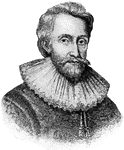
Sir Edwin Sandys
An English statesman and one of the founders of the proprietary Virginia Company of London, which established…
Sprat
"Sprat, (Clupra sprattus), a fish of the herring family, abundant on the coasts of Great Britain."—Finley,…
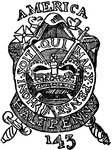
A Stamp of 1765
A stamp used after the Stamp Act of 1765 was passed. The stamp was required to be purchased and placed…
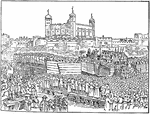
Execution of the Earl of Strafford
King Charles I signed a death warrant against Thomas Wentworth, the Earl of Strafford, after Parliament…
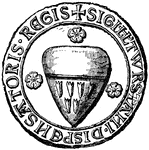
Seal of Thurstan
The heraldic seal of the archbishop of York, who worked under kings William II of England and Henry…

A Tory
Also referred to as loyalists. They were the American colonists who chose to remain loyal to Great Britain…
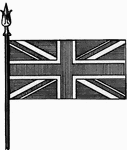
Union (National) Flag of Great Britain
The Union Flag is the national flag of Great Britain. It is more properly called the 'Great Union',…

